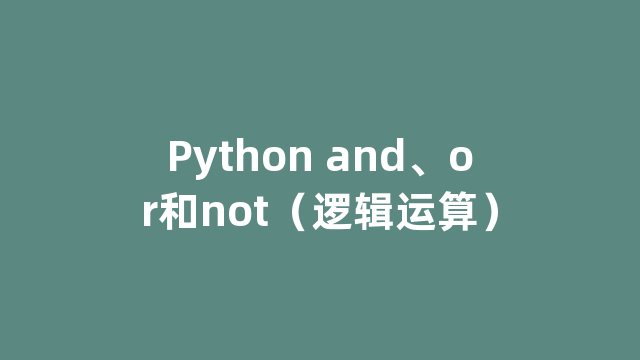
Python and、or和not(逻辑运算)
在 Python 中,除了常规的整数操作外,布尔类型有其独特的运算,通常称为逻辑运算。
1. 与(and)
该操作符有两个操作数,要求这两个操作数都是布尔型的。如果两个操作数都是 True,那么结果是 True;否则就是 False。
表1所示为其运算规则。
| A | B | A and B |
|---|---|---|
| True | True | True |
| True | False | False |
| False | True | False |
| False | False | False |
下面是实际操作的情况:
>>> True and True # 两个操作数都是True True >>> True and False # 两个操作数一个是True,另外一个是False False >>> False and True # 两个操作数一个是True,另外一个是False False >>> False and False # 两个操作数都是False False
2. 或(or)
该操作符也需要两个操作数,而且这两个操作数都应该是布尔类型的。如果有一个操作数的值是 True,那么运算结果就是 True;否则结果是 False。
表2所示为其运算规则。
| A | B | A or B |
|---|---|---|
| True | True | True |
| True | False | True |
| False | True | True |
| False | False | False |
下面是实际操作的情况:
>>> True or True # 演示布尔类型的or运算 True >>> True or False True >>> False or True True >>> False or False False
3. 非(not)
该操作符需要一个操作数,要求操作数是布尔类型的。如果操作数是 True,那么结果是 False;如果操作数的值为 False,那么结果就是 True。
表3所示为其运算规则。
| A | not A |
|---|---|
| True | False |
| False | True |
神龙|纯净稳定代理IP免费测试>>>>>>>>天启|企业级代理IP免费测试>>>>>>>>IPIPGO|全球住宅代理IP免费测试





